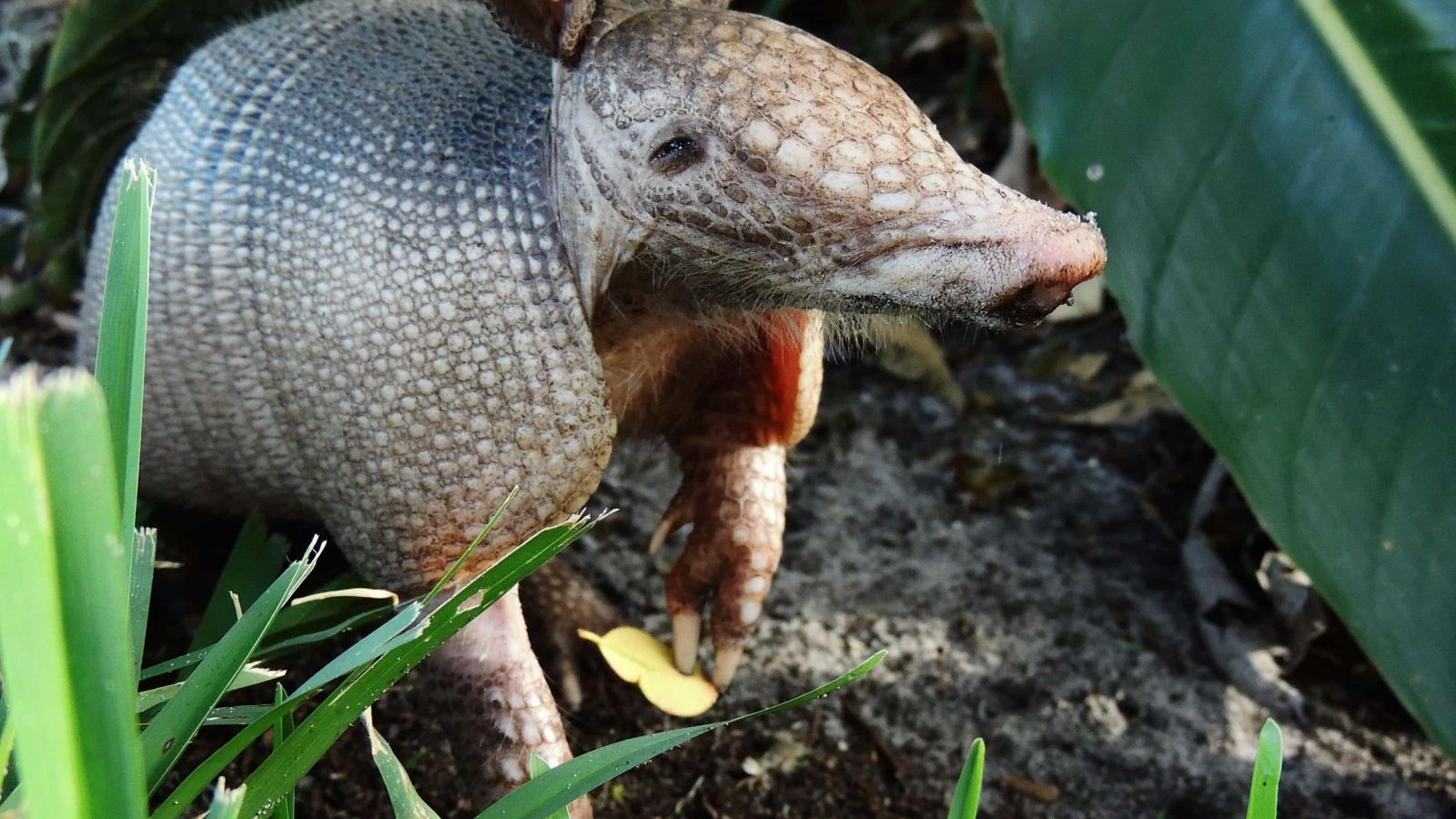References to Leprosy date from 4000 BC in ancient Egypt with numerous references to the disease in the Bible. In the fourth century, the disease arrived in Europe where its incidence peaked in the 13th century but really the pathogen has changed very little in the past 1,000 years.
Armauer Hansen determined the cause of the disease by discovering Mycobacterium leprae in Norway in 1873. It was the first bacillus to be associated with human disease. A cure for leprosy would have to await the invention of broad-spectrum antibiotics.(1)
Today leprosy is decreasing but still all too common. Information about eradicating leprosy can be found here: https://www.lepra.org.uk
Leprosy – finding an appropriate study model
M. leprae destroys the protective myelin sheaths that surround nerve fibres and then hides in Schwann cells ready to initiate a later attack. This leads to a peripheral neuropathy and a loss of sensitivity that indirectly leads to the sufferer sustaining physical damage to the digits and other extremities. This damage is typically amplified by secondary infections.
Today, 95% of the European population has developed an immunity to M. leprae but new cases continue to arise, particularly among recent immigrants from areas where the disease is still prevalent.
Research on leprosy was held back for many years by the lack of an animal model. (1,2)This prevented the search for vaccines and effective antibiotic treatments.
The bacterium multiplies very slowly – about once every two weeks – which has made it impossible to grow in useful quantities in the lab for experiments and most of the animals usually used as disease models such as rats, guinea pigs and rabbits , are immune to the disease. Mice exhibited a very mild form of the disease but it does not affect the nervous system like it does in people. (3)
“Most tissue culture cells would outgrow the bugs and so we used special tissue culture containers that had a slightly low temperature to try to keep them going. It was very frustrating work,” recalls Celia Brosnan (12)
In order to get M. leprae to multiply, the Researchers relied for a long time on the limited infection observed in the injected footpads of mice. (12)This provided sufficient bacteria to study properly the behaviour of leprosy bacilli and allow for drug screening and the discovery that using clofazimine, rifamycin and dapsone was an effective treatment. In 1982, the World Health Organization (WHO) recommended the use of all three drugs together as a multi-drug therapy to treat leprosy. This contributed to the reduction by 97% cases worldwide (1), dropping from 5.2 million in 1983 to 189,018 in 2012. (4)
The armadillo, a new life-saving model
But the real breakthrough came from Eleonor E. Storrs’ discovery in the late 1960s that nine-banded armadillos were susceptible to leprosy. The bacterium thrives in lower body temperatures, in humans, it grows in the extremities such as ears and fingers, but armadillos have a low body temperature around 33’c – lower than in humans and other mammals - which means that the disease penetrates deeper and affects the organs. The armadillo became the perfect natural incubator to grow large quantities of M. leprae to study the disease, test drugs and look for a vaccine. They supplied endless cells to sequence DNA and find antigens to the pathogen. Armadillos are also specifically useful in research because of their peculiar reproduction pattern – they give birth to four genetically identical offspring – allowing for an identical control for each experiment. (2, 3)
“Without armadillos, there would not be much research on leprosy” explains Meyers from the Armed Forces Institute. And thanks to them, over the last 20 years, 14 million people were cured of the disease. (5)
Early detection and vaccines
Since the initial discovery of leprosy in armadillos, scientists have been using it as a model to develop a vaccine and to develop a test for leprosy called the lepromin skin test. This uses proteins from the bacteria genome purified from the armadillo to predict an individual’s susceptibility and plan a course treatment. Armadillos also help to test drug efficiency and are a valuable source of infected nerve tissue to use to better understand how to protect the nervous system in affected people. (3)
“The problem with leprosy is that the bacteria need a host in which to grow, although recently it has been found that they can grow in cultures of amoebae, a single-celled protozoa. However, a major cause of leprosy-related disability is due to "late reactions". These are caused by the immune response of the infected person, which is why patients or animal models are used in research and in testing possible treatments.” explains Helen Donoghue, a M. leprae specialist from UCL.
The studies to find a vaccine were conducted until the late ‘90s, when researchers found that the BCG vaccine used to fight the mycobacterium responsible for tuberculosis (TB), was shown to have similar effects against M. leprae. (2) Studies in zebrafish had shown a link between TB and leprosy by finding a gene contributing to the natural resistance to both diseases. (6)
Armadillos have also helped in other fields of study in addition to leprosy such as understanding embryology and reproductive biology. In 2003, as a result of its value to a range of different areas, the genome of the armadillo was sequenced to better unveil the animal’s biological secrets. (3) Unfortunately, Armadillo bearing leprosy are not all good news; they are responsible for occasional transmission of leprosy to humans – about 150 cases per year in the US. The same strain of the bacteria was found in both Armadillos and humans. (7, 8)
Leprosy has been rare in Europe for almost 200 years, but that doesn’t mean the threat has disappeared elsewhere and 260,000 new cases were diagnosed in 2006, 54% of which were in India, 17% in Brazil and 7% in Indonesia. (5)
Leprosy today
The research in the next few years will be focussing on the early detection of the infection, surveillance of drug resistance, and prevention and reducing nerve damage. One researcher, Dr Pranab Das from Birmingham University, is ‘working to prevent the onslaught of nerve damage caused by the onset of leprosy’. Nerve damage can cause major disability to individuals and early detection is the most critical factor in thwarting its spread. Through this research [he] hopes to shed more light on early-detection and treatment methods. (11). Study of the pathogen will also help uncover evidence for the transmission route of the pathogens, the incubation period and help develop new tools to prevent and ultimately eradicate the disease. (7, 8, 9, 10) Hopefully this will lead to the demise of this particular mycobacterium in the human population, and perhaps even in armadillos.
REFERENCES
(1) http://www.patient.co.uk/doctor/leprosy-pro
(2) http://www.animalresearch.info/en/medical-advances/timeline/leprosy-treatments-developed/
(3) https://uaroceania.org/news/hard-on-the-outside-soft-on-the-inside-and-just-the-right-temperature/
(4) http://www.who.int/mediacentre/factsheets/fs101/en/
(5) https://ilepfederation.org
(6) https://uaroceania.org/news/tb-and-leprosy-resistance-gene-link/
(7) https://uaroceania.org/news/armadillos-infect-humans-with-leprosy/
(8) http://www.niaid.nih.gov/topics/leprosy/Research/Pages/default.aspx
(9) http://www.idri.org/leprosy.php
(10) http://www.ilep.org.uk/fileadmin/uploads/Documents/techforum.pdf
(12) MRC National Institute of Medical Research, A century of Science for Health
Last edited: 26 October 2022 17:56



